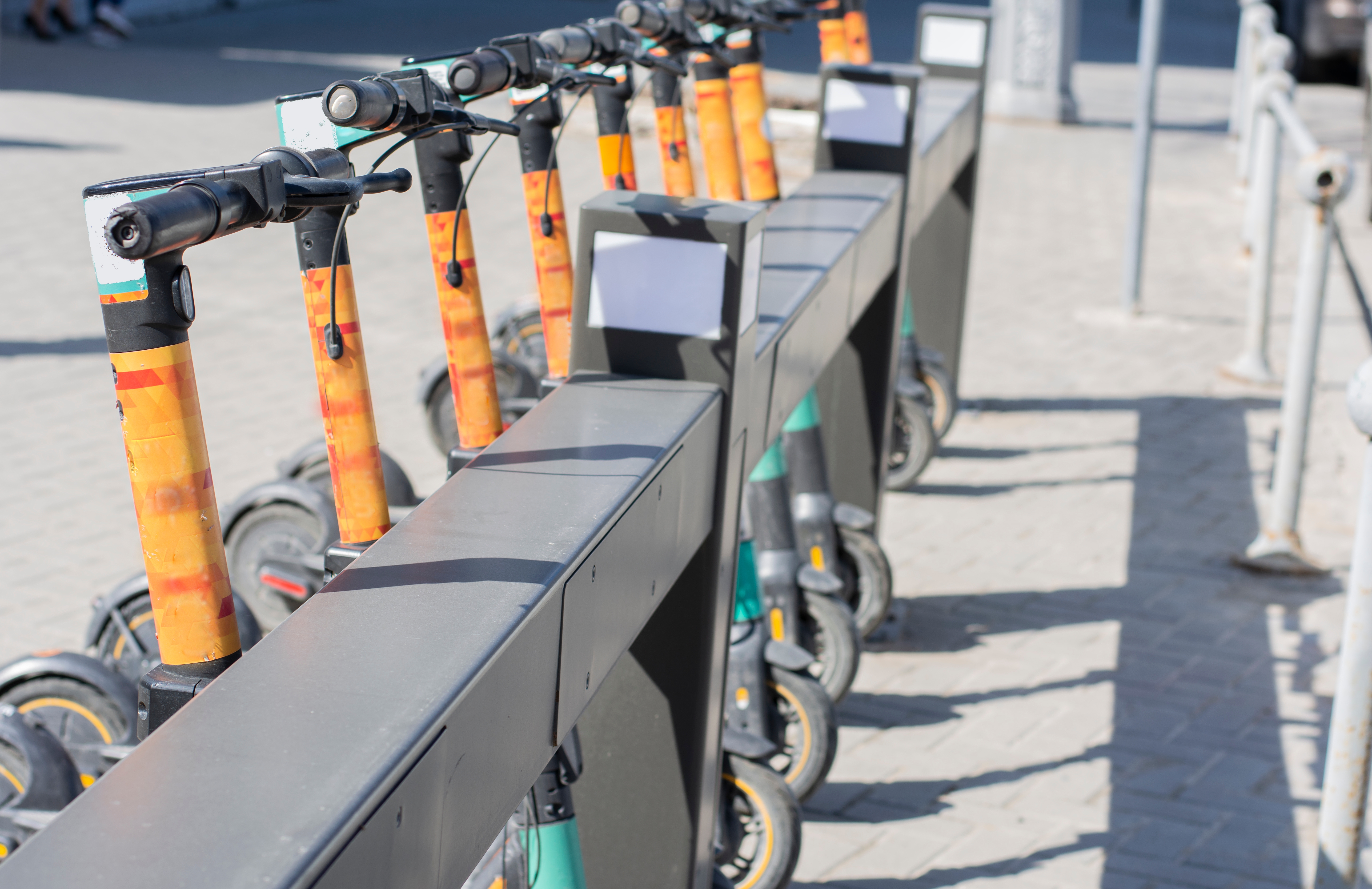



A mobility hub is a dedicated site where multiple modes of shared transport (e.g. e-bike, e-scooter, car club, electric vehicles, public transport access), support infrastructure (EV charging, parking, lockers), and transport information converge in a recognisable, integrated location.
These hubs are increasingly being piloted and deployed across the UK, combining sustainable mobility, reduced car dependency, and improved urban connectivity.
Leasing mobility hub space gives landlords and property owners opportunities to monetise underutilised land, parking sites, or frontage, while public and private mobility operators deliver services and attract users.
Aligns with transport and planning policy
Many local authorities now promote mobility hubs under net-zero, congestion, and active-travel strategies.
Reduces required parking space in new developments
Developers can reduce private car parking and offer mobility hub services instead, freeing up space for higher-density development.
Generates new ancillary revenue
Leases or licences can be structured so operators pay rent or revenue share for mobility services (bike hire, car club, EV charging, locker space).
Enhances asset attractiveness
Properties with embedded mobility infrastructure differentiate in the market and appeal to sustainability-conscious tenants and communities.
Facilitates networked service delivery
Mobility hubs function best when part of a network; leasing lets operators scale across multiple sites with uniform branding and services.
Typical components that may be included (and leased) in a mobility hub:
Shared e-bikes, e-scooters, cargo bike docks
Car club / shared EV vehicles
EV charging points
Secure cycle parking, lockers, repair stands
Public transport stop integration
Parcel lockers / micro-fulfilment
Digital information displays, ticketing kiosks
Seating, weather shelters, lighting, signage
“Soft” amenities: cafés, kiosk retail, micro retail
The inclusion and mix depend on site type (urban, suburban, transit node) and operator demand.
Here are common approaches to leasing mobility hub space:
| Model Type | Description | Key Considerations |
|---|---|---|
| Fixed Lease / Licence | Operator pays fixed rent for hub land / space | Simpler, predictable cash flow, less exposure to usage risk |
| Revenue Share / Turnover-Linked | Landlord shares in operator’s revenue (e.g. from bike hire, charging) | Aligns incentives but requires transparency & audit rights |
| Hybrid / Base + Share | Fixed base rent plus an override share beyond threshold | Balances stability with upside |
| Concession / Contractual Lease | Long-term contract where operator builds, operates hub; landlord retains ownership | Need clear terms on operations, maintenance, upgrade, termination |
| Nested Leases | Part of hub space (e.g. lockers, kiosks) subleased to third parties | Enables more revenue diversification |
The lease should cover: term, break rights, service levels, maintenance obligations, upgrade rights, assignment, liability, property reinstatement, utility rights, data access, branding, and exclusivity provisions.
Policy alignment & funding support
Many hubs qualify for government or regional transport funding, making the hub more financially viable.
Reduced parking requirements
In planning, mobility infrastructure may substitute car parking, freeing space or reducing developer obligations.
Partnership with transport authorities
Co-locating mobility hubs near public transit nodes increases footfall and utility.
Multi-use flexibility
Leasing additional services (lockers, retail, amenities) within hub can enhance revenue per square metre.
Usage / demand uncertainty
Especially in early hubs or low-density areas; operators may struggle to reach breakeven.
Capital costs & operator burden
Operators may demand rent offsets or subsidy if upfront infrastructure investment is high.
Grid, utilities, connectivity constraints
Shared mobility, EV charging, and digital systems require reliable power and data.
Lease / land use complexity
Rights, planning permission, and multi-stakeholder coordination (local authority, highways, transport).
Technological obsolescence
Mobility modes evolve (e.g. new micro-mobility devices), so lease must allow upgrades.
Exit & liability
What happens if operator defaults? Must protect landlord’s rights, reversion, and reclamation.
Fraser Bond assists clients (landowners, developers, transport authorities) with:
Feasibility & Demand Modelling – Analysing catchment, travel patterns, likely usage and revenue
Operator Procurement & Tendering – Securing bids from mobility providers (bike, scooter, EV, lockers)
Lease / Licence Structuring – Drafting and negotiating terms that protect ownership and upside
Technical & Infrastructure Review – Power, connectivity, civil engineering, integration with transport nodes
Planning & Stakeholder Management – Liaising with transport agencies, highway authorities, local planners
Portfolio Strategy – Scaling across multiple sites in a networked hub model
Whether you own a parking site, retail frontage, or transit-adjacent land in London or other parts of the UK, mobility hub leasing offers you a strategic pathway to generate new value from evolving transport demand.